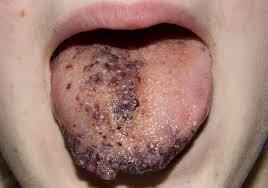Microcystic lymphatic malformation (MLM) is a rare congenital condition affecting the lymphatic system. It is characterized by the abnormal development of lymphatic vessels, leading to fluid-filled cysts. MLM is most commonly found in infants and young children, though it can persist into adulthood. These malformations can occur anywhere on the body but are frequently seen in the head, neck, and axillary regions.

Causes and Pathophysiology
MLM arises due to improper embryological development of the lymphatic system, resulting in defective drainage of lymphatic fluid. This leads to the formation of microcystic spaces within soft tissues. Genetic mutations, such as those affecting the PIK3CA pathway, have been implicated in the pathogenesis of lymphatic malformations.
Symptoms and Clinical Presentation
The symptoms of MLM vary depending on the size and location of the malformation. Common clinical features include:
- Soft, compressible swelling
- Bluish or translucent skin discoloration
- Leakage of lymphatic fluid or bleeding
- Recurrent infections
- Pain and discomfort, particularly if the lesion is large or inflamed
In some cases, MLM can lead to functional impairment, such as difficulty swallowing or breathing when located in the oropharyngeal region.
Diagnosis of Microcystic Lymphatic Malformation
A thorough clinical examination and imaging studies are essential for accurate diagnosis. Diagnostic methods include:
- Ultrasound – First-line imaging to assess cystic structure and fluid content.
- Magnetic Resonance Imaging (MRI) – Provides detailed visualization of lesion extent and involvement of surrounding tissues.
- Computed Tomography (CT) Scan – Useful in complex cases with deep tissue involvement.
Treatment Options
Conservative Management
Small and asymptomatic lesions may not require intervention and can be monitored over time.
Sclerotherapy
A minimally invasive procedure where a sclerosant agent (e.g., doxycycline, ethanol, bleomycin) is injected into the cysts to induce fibrosis and shrinkage.
Laser Therapy
Carbon dioxide (CO2) and pulsed-dye lasers are used to manage superficial lesions and improve cosmetic appearance.
Surgical Excision
For extensive or recurrent cases, surgical removal of the malformation may be necessary, though complete excision can be challenging due to infiltrative growth.
Medication Therapy
Recent advancements include targeted therapies such as sirolimus, which inhibits the mTOR pathway and reduces lesion size in severe cases.
Prognosis and Long-Term Outlook
The prognosis of MLM depends on the size, location, and response to treatment. While many cases can be effectively managed, recurrence is possible, particularly in large or infiltrative lesions. Long-term follow-up is essential to monitor for complications such as infection or functional impairment.
Microcystic lymphatic malformation is a complex congenital vascular anomaly requiring a multidisciplinary approach for diagnosis and treatment. Advances in imaging, sclerotherapy, and targeted drug therapies have improved patient outcomes. Early intervention and regular follow-ups are key to managing symptoms and preventing complications.

